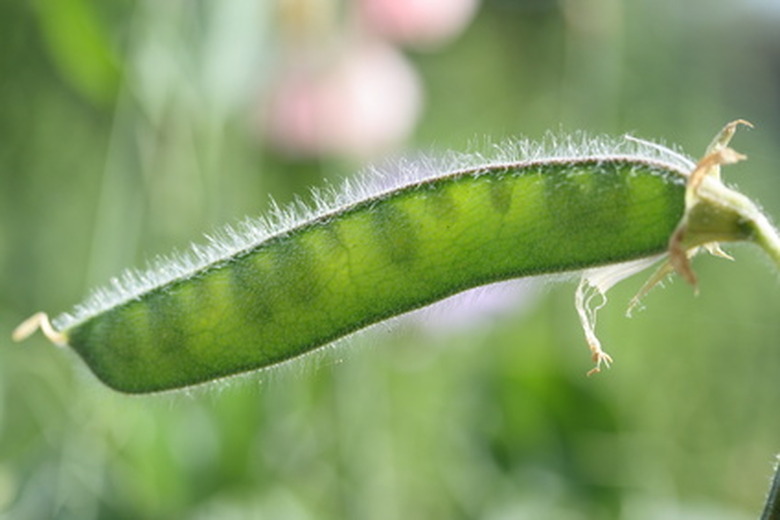Bugs That Eat Pea Plants
Pea plants, like many other garden plants, are open to insect infestation at almost any stage of growth. To save the plants you must be able to recognize the insects and evidence of their invasion. Early treatment may improve the harvest and even prevent plant death in some cases.
Pea Aphid
The pea aphid invades the plant in both adult and larval stages when the weather is cool. They have green bodies and grow to one-sixth of an inch long. Some adults are winged and some are wingless, but all larvae lack wings. Pea aphids leave a sugary, sticky material on the plant, which leaves it susceptible to fungus and mosiac. Heavy infestations stunt the plant's growth as the pests steal the plant's juices. You can control pea aphids with insecticidal soap or even just soapy water rinsed with cold water. During warmer, more humid weather, the pea aphid's natural enemies will keep it in check.
- Pea plants, like many other garden plants, are open to insect infestation at almost any stage of growth.
- Pea aphids leave a sugary, sticky material on the plant, which leaves it susceptible to fungus and mosiac.
Pea Leafminer
The larvae of the pea leafminer cause damage to the plant. Adults lay eggs, and when they hatch, the young bugs tunnel through the leaves. That reduces the ability of the pea plant to conduct photosynthesis, and therefore produce food. In heavy infestations, leaves may fall off the plant. Leafminers do not usually cause enough damage to the plant to warrant chemical treatment, as natural enemies should provide ample control.
Cowpea Curculio
Cowpea curculio looks like a boll weevil. It is an oval-shaped, black beetle with what looks like a snout. This insect punctures the pea pod and lays a single egg inside, leaving a wart-like speck on the pod. The egg hatches in days, revealing a grub that feeds on the peas inside the pod. The only way to control this bug is preventative application of insecticides.
- The larvae of the pea leafminer cause damage to the plant.
- The egg hatches in days, revealing a grub that feeds on the peas inside the pod.
Root Knot Nematodes
Female root knot nematodes build webs and lay their eggs in the root system of the pea plants. When the nematode eggs hatch, they feed on the roots, causing swellings and galls. In turn, the plants become stunted and yellowed and produce fewer pea pods. The Mississippi silver cultivar of peas resists the nematodes. You may treat infected plants of other varieties by planting marigolds so that their roots overlap with the pea plants; marigolds are a natural deterrent to a number of garden pests. Crop rotation may help prevent future infestations.
Cut Worms and Army Worms
These bugs are actually black, green or reddish worms that grow up to 2 inches long. Cutworms feed on stems near the soil surface, and army worms crawl up and feed on the leaves and stem of a plant. Keeping the weeds down around your pea plants will help keep the population of the pests down. In heavy infestations, however, insecticides may be appropriate.
- Female root knot nematodes build webs and lay their eggs in the root system of the pea plants.
